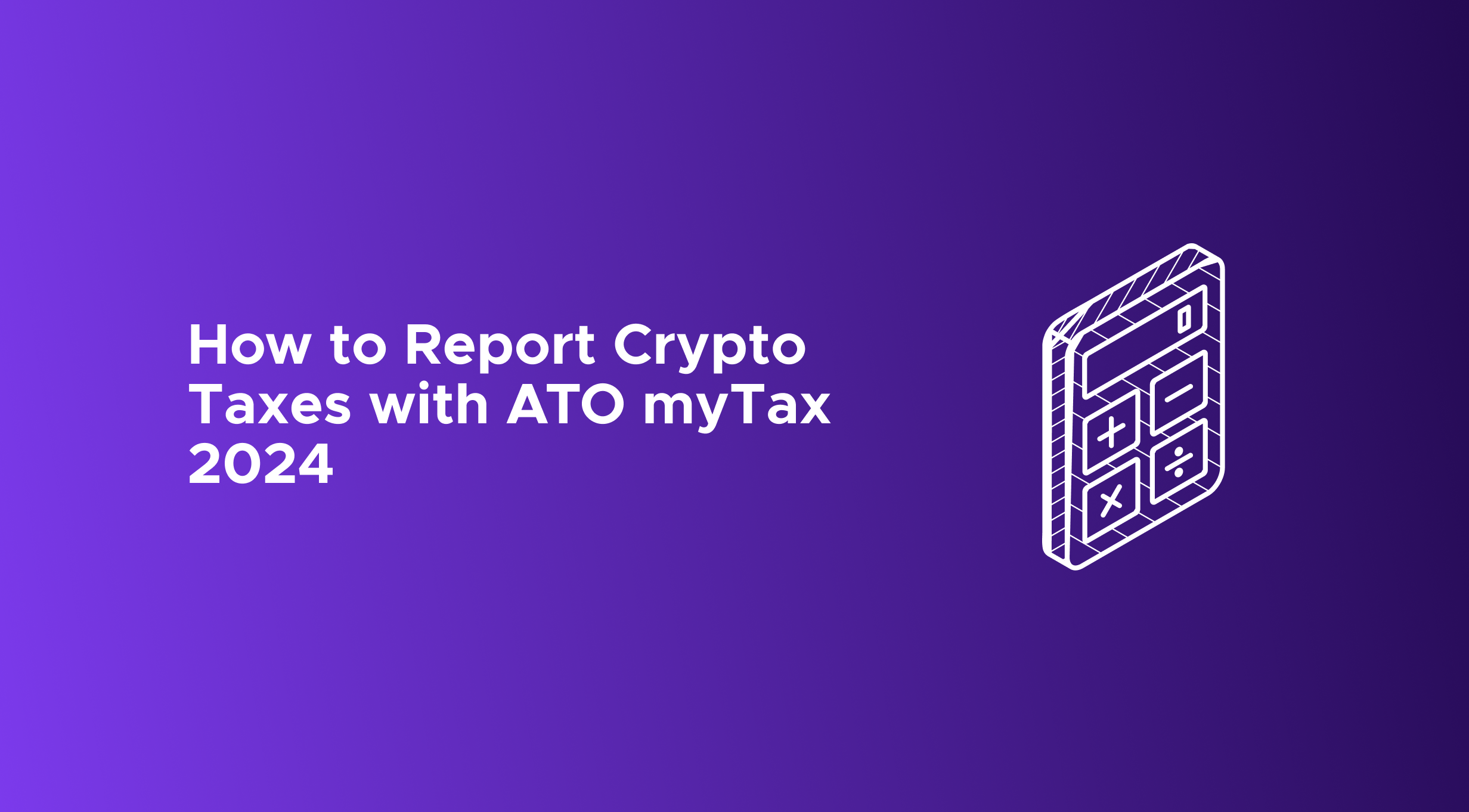How to Report Crypto Taxes with ATO myTax 2024

As cryptocurrencies continue gaining popularity, Australian taxpayers must understand their tax obligations and accurately report their crypto gains and income. The Australian Taxation Office (ATO) requires you to declare your crypto activities as part of your annual tax return. This article will guide you through the process of filing your crypto taxes with the ATO, ensuring compliance and peace of mind.
Step-by-Step Guide to Filing Crypto Taxes with ATO myTax:
On Crypto Tax Calculator:
- Log in to your Crypto Tax Calculator account and ensure all your exchanges and wallets are imported.
- Double-check your transactions, and review the "Tips" page to check for any suggestions that could improve the accuracy of your report.
- Go to the tax reports page and download your ATO myTax Report. This report provides a high-level summary of your trading activity, providing the figures needed to enter on myTax.
On myTax:
- The first step is to log in to your ATO myTax account from the myGov website or create one if you don't have one already.
- Select "Manage tax returns."
- Choose the option for the current financial year return.
- Verify that your personal information and contact details are correct, then click "Next."
- Ensure that your financial institution details are up to date, then click "Next."
- Complete your personal details accordingly under the "Personalise your XXXX return" section.
- For your crypto investments, select the appropriate options based on your specific investments:
- For crypto capital gains or losses, check the box next to "You had Australian interest, or other Australian income or losses from investments or property." Then, from the new drop-down menu, check the "Capital gains or losses that are not from a managed fund" option.
- For crypto income, check the option "You had other income not listed above."
- For deductions, check the option "You had deductions you want to claim". Then, from the drop-down, check the option "Other deductions."
- Complete the rest of this page according to your specific situation, then select "Next."
- On the "Prepare your 2021-22 return" page, select the "Add/Edit" option next to capital gains or losses.
- In the box under "Total current year capital gains," insert the figure next to "Total Current Year Capital Gains" from your ATO myTax Report (in the capital gains section near the top).
- In the box under "Net capital gain," copy and paste the figure next to "Net Capital Gain after Discount" from your Crypto Tax Calculator ATO myTax report (in the capital gains summary section). If you only have a capital loss for the year, enter this figure into the box under "Net capital loss carried forward to later income years."
- For the question, "Have you applied an exemption, rollover or additional discount?" select "No."
- Click "Save and Continue."
- For crypto income; On the "Prepare your 2022-23 return" page, choose "Add/Edit" beside other income.
- Select "Add" next to any other income.
- In the drop-down menu under "Type of payment," select "Other."
- Provide a description of your income, such as "staking rewards," in the description field.
- In your Crypto Tax Calculator ATO myTax report, copy the figure next to "Total Net Income" in the Income Summary section and paste it into the amount box.
- Select "Save" and then "Save and Continue."
- For deductions relating to crypto; On the "Prepare your 2022-23 return" page, select "Add/Edit" next to deductions.
- Select "Add" next to other deductions.
- From the drop-down menu under "Type of deduction," select "Deductions relating to financial investments."
- Enter a description, such as "crypto expenses", for the deduction.
- Enter the total of any tax-deductible expenses
- Select "Save."
- If you want to claim the cost of your Crypto Tax Calculator plan as a deduction; Next to "Other deductions," select "Add" again.
- From the drop-down menu under "Type of deduction," select "Other deductions."
- Provide an accurate description, such as "crypto tax software plan fee."
- In the box under "Amount," enter the cost of your Crypto Tax Calculator plan.
- Select "Save."
- Complete the rest of your tax return as it relates to your investments.
Please note that it's essential to verify the accuracy of the information and consult with a tax professional for personalised advice based on your specific circumstances. If you have more than $10,000 in Capital Gains, you will also need to fill out the Capital Gains Tax Schedule.
Filing with Crypto Tax Calculator
Filing your crypto taxes with the ATO doesn't have to be an overwhelming task. By following this step-by-step guide and leveraging crypto tax software like Crypto Tax Calculator, you can accurately report your crypto gains, income, and deductions, ensuring compliance with the ATO's requirements. Remember to stay informed about the latest updates in crypto taxation and consult a tax professional for personalised advice regarding your specific situation.

